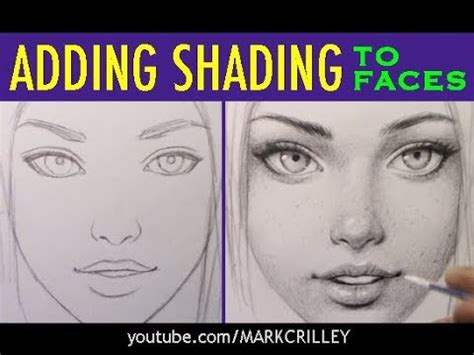Within the realm of artistic expression, capturing the essence of a human face has long been an endeavor that both enthralled and challenged countless artists throughout history. Today, with the advent of cutting-edge technology, this timeless art form has evolved to suit the digital era. Gone are the days of paper and pencil; now, an iPad can serve as your canvas, adding a new dimension to the age-old tradition of portraiture.
Unlocking the potential of your iPad as a powerful artistic tool opens up a world of creative possibilities. The precision and versatility offered by this digital medium empower artists to delve deep into the intricacies of facial features, exploring the interplay of light and shadows to portray emotion and depth in their artworks. Whether you are an experienced artist yearning for a new medium or an aspiring beginner fascinated by the boundless realm of digital art, this guide will equip you with the essential techniques and insights to master the art of portrait drawing.
Building upon the foundations of traditional portrait drawing, we will explore how to harness the potential of your iPad, utilizing cutting-edge apps and intuitive stylus pens to bring your creative vision to life. From understanding facial proportions and anatomy to mastering essential shading techniques, each step will be designed to enhance your skills and broaden your artistic horizons.
Embark on this artistic journey with us and embrace the incredible possibilities that lie within your fingertips. Whether you seek to capture the subtle nuances of human expression or experiment with abstract interpretations, this comprehensive guide will provide you with the necessary tools to create lifelike portraits that transcend the boundaries of the tangible and enter the realm of the extraordinary.
Choosing the Appropriate Drawing Application

When it comes to creating artwork on a tablet device, it is essential to select the right digital drawing application. This section will provide guidance on selecting the appropriate software to achieve your desired artistic outcomes, taking into account various factors such as functionality, compatibility, and user-friendly interface.
| Factor | Description |
|---|---|
| Functionality | The drawing app should offer a wide range of tools and features to support the creation of detailed and expressive artwork. Look for apps that include layers, brushes, color palettes, and blending options. |
| Compatibility | Ensure the chosen drawing app is compatible with your iPad model and operating system. Some apps may only work on specific versions, so be diligent in checking compatibility before making a decision. |
| User-Friendly Interface | A user-friendly interface is crucial for a smooth drawing experience. Look for apps that have intuitive navigation, customizable settings, and responsive touch controls. This will allow you to focus on your artwork without getting overwhelmed by complex menus or confusing layouts. |
Remember, the ultimate goal is to find a drawing app that supports your artistic style and preferences. Take the time to explore different options, read reviews, and even try out free trials if available. Finding the right drawing app will significantly enhance your ability to create stunning portraits and artworks on your iPad.
Exploring Different Drawing Tools and Techniques
In this section, we will delve into the various tools and techniques that can be utilized for creating captivating digital artworks. Understanding the diverse array of tools at your disposal will allow you to achieve unique and expressive results in your artistic endeavors.
Brushes and Pens: Experimenting with different brush and pen options can significantly impact the overall style and texture of your artwork. By varying the stroke thickness, hardness, and opacity, you can create a wide range of effects - from bold and dynamic to subtle and delicate.
Layers and Blending Modes: Utilizing layers and blending modes allows you to superimpose different elements of your artwork, creating depth and dimension. You can experiment with blending modes such as Multiply, Overlay, and Screen to achieve various effects and enhance the overall visual impact of your portrait.
Textures and Patterns: Incorporating textures and patterns into your artwork can add a unique and visually interesting element. Whether you choose to use pre-made textures or create your own, incorporating these elements can enhance the realism and overall aesthetic appeal of your portrait.
Gesture Drawing: Gesture drawing involves capturing the essence and movement of the subject in a loose and spontaneous manner. This technique focuses on capturing the overall energy and flow of the subject, allowing for a more dynamic and lively portrayal.
Color Theory: Understanding color theory is crucial for creating visually appealing portraits. Exploring different color palettes, complementary and analogous colors, and understanding the emotional impact of different color combinations can greatly enhance the overall mood and atmosphere of your artwork.
Shading and Lighting: Mastering shading and lighting techniques is essential for creating realistic and three-dimensional portraits. Understanding how light interacts with different surfaces and mastering techniques such as cross-hatching, stippling, and blending can bring your portraits to life.
Experimentation and Personal Style: Finally, don't be afraid to experiment and develop your unique artistic style. Embrace the freedom that digital drawing affords and explore different techniques and tools to find your own creative voice. Continuously honing your skills and uncovering new ways to express yourself will ensure that your portraits are truly one-of-a-kind.
By exploring and mastering these different drawing tools and techniques, you will have the necessary skills to create stunning portraits on your iPad, bringing your artistic vision to life from the tip of your stylus.
Setting Up Your Creative Environment and Optimizing Your Digital Canvas

Creating a comfortable and organized workspace is essential for artists looking to bring their portraits to life on their digital devices. Here are some practical tips and tricks to help you prepare your workstation and configure your iPad for an optimal drawing experience.
- Choose a well-lit area: Ensure that your workspace is adequately lit to avoid straining your eyes during long drawing sessions. Natural light or a good-quality desk lamp can provide the ideal illumination.
- Ergonomics matter: Take care of your posture and consider investing in an adjustable stand or tablet holder to prop up your iPad at a comfortable angle. This will help prevent fatigue and improve your overall drawing experience.
- Keep it clean and clutter-free: Clear your workspace of any unnecessary items or distractions. Having a clutter-free environment can promote focus and enhance your creativity.
- Gather your drawing tools: Before starting your portrait, gather your digital drawing tools such as a capacitive stylus or Apple Pencil. Make sure they are fully charged and ready for use.
- Calibrate your iPad display: To ensure accurate colors and precise lines, it's important to calibrate your iPad's display settings. Most iPads offer built-in calibration options or you can use third-party apps for more advanced adjustments.
- Find the perfect drawing app: Choose a drawing app that suits your preferences and artistic style. There are numerous options available, each with its own unique features and interface. Experiment with different apps to find the one that best caters to your needs.
- Customize your digital canvas: Once you have selected your drawing app, familiarize yourself with its settings and customize your canvas size, resolution, and orientation according to your preferences. This will ensure that your portraits are created on a digital canvas that feels just right for you.
- Backup your work: Protect your artwork from accidental loss or device malfunction by regularly saving and backing up your files. Utilize cloud storage or external devices to create multiple copies of your work.
By carefully arranging your workspace, optimizing your digital canvas, and utilizing the right tools, you can set yourself up for success as you embark on the journey of drawing stunning portraits with your iPad.
Creating the Initial Sketch of the Face
In the initial stages of the artwork creation process, a fundamental step is to outline the basic structure of the subject's face. This initial sketch serves as the foundation for the portrait and helps to establish the overall proportions and features.
Begin by lightly tracing the contours of the face using swift and confident strokes, capturing the shape of the eyes, nose, mouth, and other essential facial elements. The use of slight variations in line thickness can add depth and dimensionality to the sketch.
It is crucial to focus on capturing the unique characteristics and expressions of the subject while maintaining an accurate representation. Pay attention to subtle details such as the placement of facial features, the angles of the jawline, and the proportions of the different facial regions.
During this initial sketching phase, it is recommended to keep the lines loose and flexible, allowing for adjustments and refinements as the artwork progresses. The use of an eraser or undo function can be helpful in correcting any mistakes or refining the shape of the portrait.
Once the basic outline is in place, it becomes easier to build upon the initial sketch by adding more refined details and textures. This initial sketch serves as a guide to ensure a solid foundation for the rest of the portrait drawing process.
Remember, the initial outline is just the starting point, and it is through practice and experimentation that one can develop their unique style and technique in drawing portraits on an iPad.
Adding Details and Shading to Bring the Portraiture to Life

In this section, we will explore the crucial step of adding intricate details and subtle shading to breathe life into your digital artwork. By focusing on capturing the unique features and expressions of your subject, you can create a portrait that truly reflects their essence.
Begin by carefully observing the reference image or live model, paying attention to the small nuances that make up their appearance. Take note of the way light and shadow interact with their facial structure, highlighting their contours and adding depth to their features.
Next, using your preferred digital drawing application, choose a brush or pencil tool that allows for precise lines and textured shading. Start by sketching in the basic shapes and proportions of the face, capturing the overall likeness before moving on to smaller details.
Focus on the eyes - the windows to the soul. Use gentle strokes to define the iris, capturing the reflection of light and the depth of the pupils. Don't forget to add the eyelashes and eyebrows, which can contribute to the expression and realism of the portrait.
Continue by adding subtle lines and shading to emphasize the contours of the nose, lips, and ears. Pay close attention to the creases and wrinkles that give character to the face, using varying degrees of pressure to create a sense of volume and texture.
When adding shading, consider the direction of the light source and how it interacts with each feature. Use a combination of hatching, cross-hatching, and blending techniques to create smooth transitions between light and shadow, adding dimension and depth to your portrait.
Lastly, don't shy away from experimenting with color, whether through subtle accents or more extensive use. Adding a touch of warmth or coolness to the skin tones can bring a sense of vitality to your portrait, enhancing the overall realism and capturing the essence of your subject.
| For effective detail and shading: | - Observe and capture unique features | - Focus on light and shadow |
| - Begin with basic shapes and proportions | - Pay special attention to the eyes | - Emphasize contours and wrinkles |
| - Consider light direction and shading techniques | - Experiment with color to enhance realism |
Understanding the Significance of Proportions and Facial Characteristics
When it comes to creating a realistic and visually appealing portrait, one must possess a keen understanding of the importance of proportions and facial features. These elements play a crucial role in capturing the essence and likeness of the subject, allowing the artist to bring their art to life.
Proportions serve as the foundation of any successful portrait, enabling the artist to accurately depict the size and placement of facial features. The careful observation and analysis of proportions allow the artist to maintain a harmonious balance between the different parts of the face, resulting in a lifelike representation.
Facial features are the unique characteristics that define an individual's appearance. From the shape of the eyes to the contour of the nose and the curve of the lips, each feature contributes to the overall expression and personality of the subject. Understanding how to capture these features with precision and accuracy is essential for creating a portrait that truly reflects the subject's likeness.
By paying attention to proportions and facial characteristics, artists can achieve a greater level of realism and accuracy in their portraits. It is through a deep understanding of these elements that they can bring depth, emotion, and character to their artwork, making it truly captivating for the viewer.
Organizing and Editing Your Artwork with Layers

In this section, we will explore the advantageous use of layers when creating and refining your artistic masterpiece. Layers serve as virtual transparent sheets that allow you to separate different elements of your artwork, such as the background, main subject, and additional details. By utilizing layers, you can conveniently adjust, rearrange, and edit specific parts of your drawing without affecting the rest of your artwork. Let's delve into the practical ways of harnessing the power of layers for a more efficient and flexible drawing experience on your iPad.
Organizing Your Drawing with Layers
Layers provide a structured way to organize your artwork by giving you the ability to group related elements together. For example, you can create a separate layer for the background, the foreground, and each individual component of your artwork. This allows you to easily hide or show specific parts as needed while working on your portrait. Moreover, layers enable you to easily rearrange the order of your elements, allowing you to experiment with different compositions and visual effects without compromising the entire drawing.
Editing Your Drawing with Layers
One of the significant advantages of using layers is the ability to make edits without affecting the original artwork. By working on separate layers, you can apply changes and corrections to specific parts of your drawing without worrying about damaging the other elements. This can be especially useful when refining intricate details or experimenting with different color schemes. With layers, you can easily erase, modify, or add new elements without fear of irreversible consequences, providing you with the freedom to explore and evolve your artistic vision.
Adding Depth and Dimension with Layers
Layers also allow you to create depth and dimension in your portrait. By placing elements on different layers, you can control their position in the virtual space. For instance, you can place the background on a separate layer behind the main subject, giving the illusion of distance. You can also use layers to apply effects such as shadows or highlights, enhancing the three-dimensional appearance of your artwork. By leveraging the versatility of layers, you can infuse life and realism into your portrait, captivating your viewers with its captivating depth.
Enhancing the Appearance of Your Digital Artwork with Color and Texture
When it comes to creating a captivating digital portrait, adding color and texture can breathe life into your artwork and make it truly stand out. By carefully selecting the right hues and incorporating various textures, you can enhance the overall appearance of your portrait and create a visually striking piece of art.
Color has the power to amplify emotions, convey mood, and add depth to your artwork. Experimenting with different color palettes allows you to create a unique atmosphere and express your artistic vision. Whether you prefer vibrant and bold tones or subtle and muted shades, selecting the right colors can greatly impact the impact of your portrait.
In addition to color, incorporating texture into your digital artwork can add a sense of realism and dimension. Textures can be applied to various elements of your portrait, such as the skin, clothing, or background, to create visual interest and make the artwork more engaging. Whether you choose to add rough textures for a gritty effect or smooth textures for a softer appearance, the possibilities are endless.
Before applying color and texture to your portrait, it's important to consider the overall composition and balance of your artwork. Understanding how different elements interact with each other and complement or contrast one another can help you create a harmonious and visually appealing portrait. Whether you are aiming for a realistic representation or a more abstract interpretation, striking the right balance is essential.
Once you have mastered the techniques of adding color and texture to your portrait, your digital artwork will come to life with a newfound vibrancy and aesthetic appeal. By carefully choosing the right colors and textures, you can enhance the visual impact of your artwork and take your portrait drawing skills to the next level.
Sharing Your Completed Artwork and Gathering Feedback

Now that you have successfully created your masterpiece using the digital capabilities of your iPad, it's time to share your finished artwork with the world and receive valuable feedback. The process of sharing your work allows you to showcase your talent, gain exposure, and connect with other artists and art enthusiasts.
Showcasing Your Art:
There are various ways to showcase your completed portrait. You can share it on social media platforms such as Instagram, Facebook, or Twitter, using relevant hashtags to reach a wider audience. Alternatively, you can create a portfolio website or blog where you can upload your artwork and write about your artistic journey. By sharing your work online, you have the opportunity to reach a global audience, receive recognition, and potentially connect with other artists and art collectors.
Soliciting Feedback:
Receiving feedback is an essential part of the artistic process to help you grow and improve your skills. Once you have shared your portrait, encourage others to leave comments, critiques, or suggestions on your artwork. This feedback can provide you with different perspectives, highlight areas for improvement, and offer inspiration for future projects.
Joining Art Communities:
Consider becoming a part of online art communities or forums where you can connect with like-minded individuals. These platforms are great for sharing your work, engaging in discussions about art techniques, and receiving feedback from fellow artists. By participating in art communities, you can expand your network, learn from others, and find inspiration for your future artworks.
Collaborating with Other Artists:
Collaboration can be an exciting way to enhance your artistic skills and create unique artwork. Reach out to other artists whose work inspires you and explore the possibility of collaborating on a joint project. By working together, you can exchange ideas, techniques, and perspectives, leading to the creation of innovative and captivating art.
Attending Art Exhibitions and Events:
Immerse yourself in the art world by attending local art exhibitions, galleries, and events. These gatherings provide valuable networking opportunities, where you can meet fellow artists, receive feedback from experts, and showcase your portfolio to potential clients or collectors. Engaging with the art community offline can help you establish connections and gain recognition in the art industry.
In conclusion, sharing your finished portrait and receiving feedback is crucial for an artist's growth and exposure. Embrace the digital tools available on your iPad to showcase your artwork, connect with other artists online, collaborate, and participate in offline art events to establish yourself within the art community. Through these activities, you can foster your artistic journey, receive constructive criticism, and draw inspiration from fellow creators.
FAQ
What materials do I need to draw a portrait on iPad?
To draw a portrait on iPad, you need an iPad with a drawing app installed, an Apple Pencil or a stylus, and a reference photo of the person you want to draw.
Can I draw a portrait on iPad if I don't have any artistic experience?
Yes, you can still draw a portrait on iPad even if you don't have any artistic experience. There are many drawing apps that offer various tools and features to assist beginners in creating realistic portraits.
What are some tips for drawing a realistic portrait on iPad?
Some tips for drawing a realistic portrait on iPad include using layers to separate different elements of the portrait, adjusting the opacity to create subtle shading, and practicing the use of different brushes to achieve different textures.
Is it possible to make corrections or edits to the portrait after it is drawn on iPad?
Yes, one of the advantages of drawing on iPad is the ability to make corrections or edits easily. With the use of layers, you can make changes to specific parts of the portrait without affecting the rest of the drawing.
Are there any recommended drawing apps for creating portraits on iPad?
Yes, there are several recommended drawing apps for creating portraits on iPad, such as Procreate, Adobe Fresco, and Sketchbook. These apps offer a wide range of tools and features specifically designed for digital portrait drawing.




